Picture this: a company has a great product that customers can't get enough of. They have a solid marketing plan, a strong sales team, and a loyal customer base. But when it comes to actually getting their product into the hands of the end users, things start to fall apart. Orders are delayed, shipping costs are high, and customers are getting frustrated. This scenario is all too common in today's fast-paced business world. That's where logistics strategy comes in.
In this article, we'll dive into the fascinating world of logistics strategy. You'll learn what it is, why it's important, and how to develop a bullet-proof logistics strategy in your organization. With real-life examples, you'll see how a logistics strategy can make or break a business.
Along the way, we'll show you how Cascade—the #1 strategy execution platform—can help you centralize your logistics strategy and provide a free template to streamline your strategic process.
Let's get started!
What Is A Logistics Strategy?
Logistics strategy refers to the approach businesses use to manage the flow of goods and services from the point of origin to the point of consumption. It involves coordinating transportation, warehousing, inventory management, and distribution to ensure the timely delivery of products and services to customers while minimizing logistics costs.
In essence, it dictates how your company will move goods and services from point A to point B (and beyond). It outlines the overall direction and objectives of the logistics function in your organization and provides a framework for decision-making, resource allocation, and performance measurement. Your logistics strategy should align with your broader business strategy and objectives—such as improving customer satisfaction, reducing costs, or increasing market share.
Let's take the example of a popular coffee shop. Customers love their coffee, but they also expect it to be available whenever they want it. A logistics strategy helps the coffee shop ensure they have the right amount of inventory on hand, that their delivery times are consistent, and that they can keep up with customer demand. With a solid logistics strategy in place, the coffee shop can ensure a positive customer experience while minimizing costs and maximizing profits.
Logistics Strategies: Types And Uses
Picture a company that has been struggling with slow deliveries, high costs, and low-quality control. It's a recipe for disaster!
Thankfully, logistics strategies can help address these issues and ensure smooth operations. There are different types of logistics strategies, and each of these can benefit your business in different ways.
Inbound Logistics
To create a product, companies need raw materials. An effective inbound logistics strategy can ensure a streamlined logistics process from suppliers to production facilities. Reduced lead times, optimized inventory levels, and improved quality control are just a few of the benefits of a successful inbound logistics strategy.
Outbound Logistics
Now, it's time to get those finished products out to the customers! Outbound logistics manages the flow of finished products from the production facility to the end users. The primary goal is timely delivery while minimizing costs.
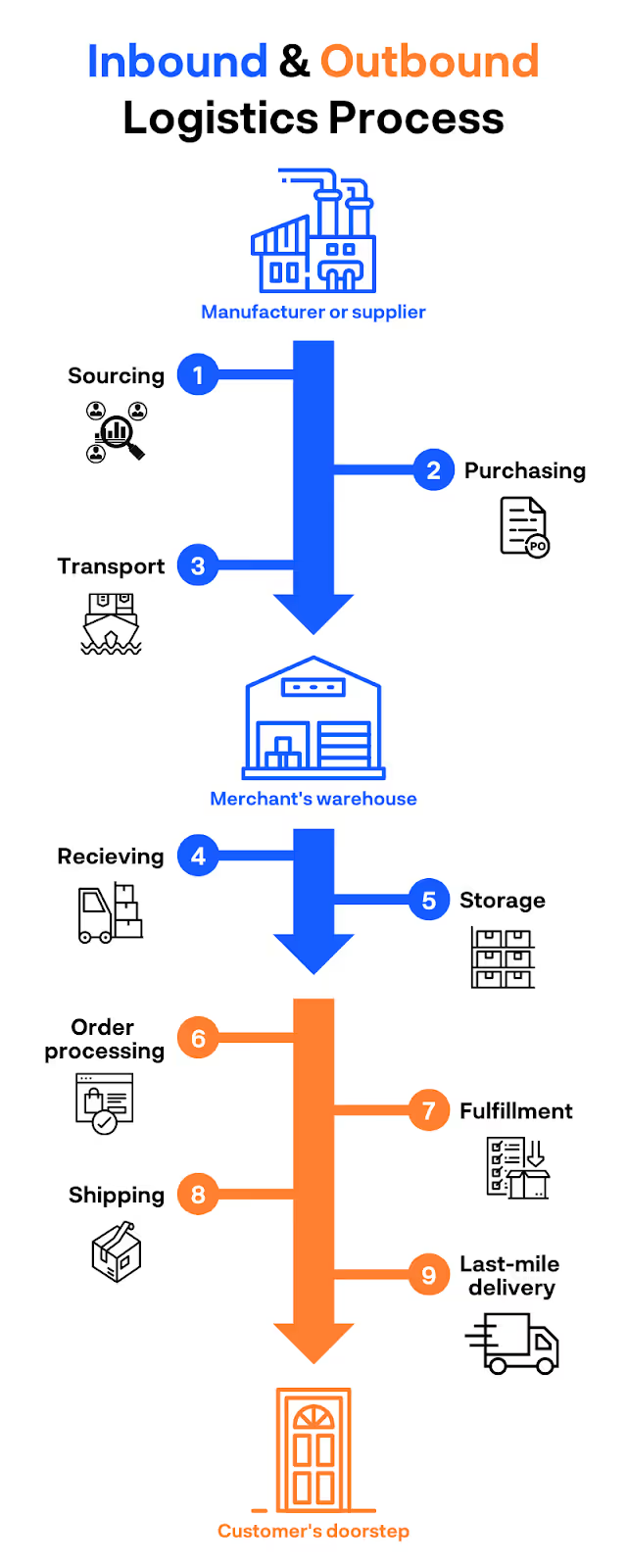
Third-Party Logistics
Don't want to handle logistics in-house? Then, third-party logistics (3PL) is the way to go. 3PL providers offer services like transportation, warehousing, and inventory management. Outsourcing logistics functions to a 3PL provider can help reduce costs, improve operational efficiency, and let businesses focus on their core competencies.

Fourth-Party Logistics
Fourth-party logistics (4PL) is even more comprehensive than 3PL. 4PL providers handle the entire logistics function, including the management of 3PL providers. This approach can provide end-to-end supply chain management solutions.
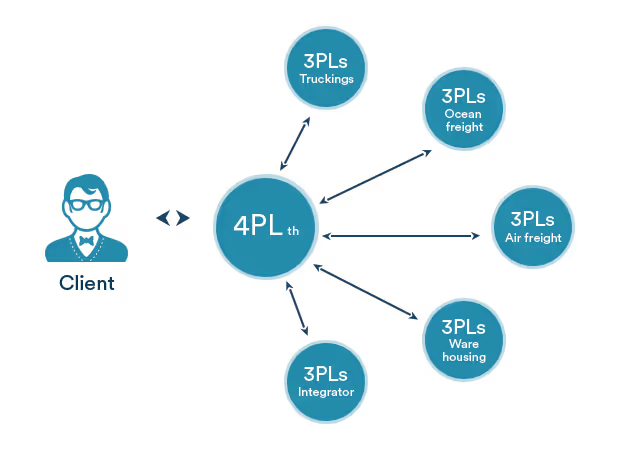
Distribution Logistics
Distribution logistics is about the management of product flow from the company's warehouse or distribution center to its customers. A strong distribution logistics strategy can reduce lead times, improve order accuracy, and increase customer satisfaction.
Reverse Logistics
Sometimes, products need to flow in reverse. Reverse logistics refers to the management of the flow of products from customers back to the company. Activities such as product returns, repairs, and recycling fall under this category. A well-executed reverse logistics strategy can improve customer satisfaction, reduce costs, and minimize waste.
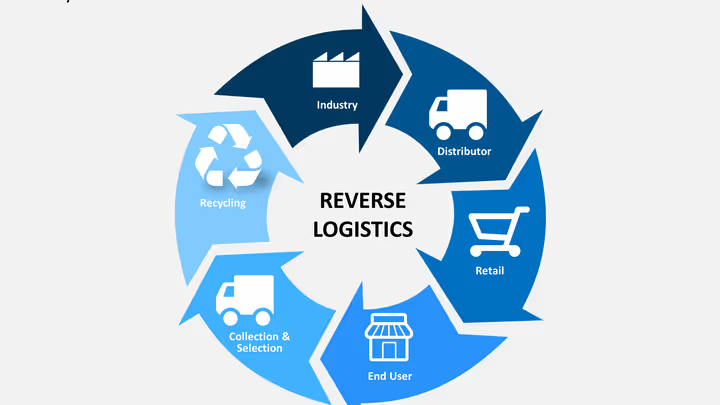
Why Implement A Logistics Strategy?
A well-designed logistics strategy can bring a host of benefits to a business. Some of the primary reasons to implement a logistics strategy include:
- Improve efficiency: By streamlining logistics operations, businesses can improve the accuracy and speed of order processing, reduce inventory levels, and minimize lead times. This can lead to a significant improvement in overall efficiency and cost reduction.
- Enhance customer satisfaction: Logistics plays a crucial role in delivering products to customers on time. An effective logistics strategy can help businesses improve delivery times, reduce order errors, and increase transparency, leading to higher customer satisfaction.
- Gain a competitive advantage: A well-designed logistics strategy can help businesses differentiate themselves from their competitors by optimizing supply chain operations, reducing costs, and improving product quality.
- Reduce risks: Effective logistics management can help businesses mitigate the risks associated with supply chain disruptions, such as delays in delivery, stockouts, and quality issues. By developing contingency plans and diversifying their supply base, businesses can reduce risks and maintain business continuity.
📚Recommended read: The 6 Best Supply Chain Strategies I've Ever Seen!
Steps To Develop A Successful Logistics Strategy
Developing a successful logistics strategy requires a methodical approach that involves several key steps. We’ll walk you through each of the steps, and—while we’re at it—we’ll show you how Cascade can help you plan, execute, and track your logistics strategy in one place.
Step 1: Define your key metrics
The first step is to clearly define the key metrics you want to achieve with your logistics strategy. These should align with the broader business goals and consider factors such as customer expectations, market trends, and competitive pressures.
💡Cascade Tip: Leverage the power of Cascade's Metrics Library, where you can effortlessly integrate core metrics from your systems, data lakes, BI tools, or spreadsheets. Centralize all these vital metrics under one roof for comprehensive insights and streamlined decision-making.
Step 2: Conduct a logistics audit based on your current data
The next step is to conduct a logistics audit to assess the current state of logistics operations. The audit should cover all aspects of logistics, including transportation, warehousing, inventory management, and distribution. It should identify strengths, weaknesses, opportunities, and threats (SWOT) and provide a baseline for developing the logistics strategy.
The insights gained from this audit aren't merely data points—they serve as a reference, aiding in setting targets and making informed forecasts as you build your strategic logistics plan.
Step 3: Develop a logistics plan & ensure alignment
Based on the audit results, the next step is to develop a logistics plan. The plan should outline the specific activities and initiatives required to achieve the key metrics you set and include timelines, resource requirements, and performance measures (KPIs). This strategic plan should also consider different types of logistics strategies, such as inbound logistics, outbound logistics, and distribution logistics, and choose the most suitable ones.
💡Cascade Tip: Simplify the process of building your logistics strategy with our Planner feature. Break down complexity, moving from high-level initiatives to actionable outcomes for an execution-ready plan.

👉Don’t know where to start? Click here to get instant access to your free Logistics Strategy Plan Template.
For your logistics strategy to be successful, it’s fundamental to ensure it aligns not only with your overarching strategy but also with strategies from other departments and functions. Anticipating and harmonizing with initiatives—such as marketing campaigns, special promotions, etc—is crucial for seamless operations and customer satisfaction.
💡Cascade Tip: Cascade’s Alignment & Relationships feature allows you to see how your logistics strategic plan connects to other organizational plans and map the dependencies that may lie along your journey.
Step 4: Execute the logistics plan
The next step is to put your strategic plan into action. To execute a logistics plan, you’ll need to allocate resources, monitor progress, and make adjustments as necessary. This involves ensuring that the necessary resources are available and properly utilized, tracking the movement of goods and monitoring inventory levels, and measuring performance against predetermined metrics.
💡Cascade Tip: Streamline your tracking process with Cascade's integrations. Import data from multiple sources and connect them to your metrics and KPIs in your plans to monitor your progress in real-time.
Step 5: Constantly evaluate and refine the logistics strategy
The final step is to evaluate the effectiveness of the logistics strategy and refine it as needed. Evaluation involves measuring performance against the objectives and performance measures outlined in the plan and identifying areas for improvement. Refinement involves making changes to the logistics strategy to improve its effectiveness.
💡Cascade Tip: Develop insightful real-time reports and dashboards to get a clear view of how well your logistics strategy is performing. Easily share this valuable information with your stakeholders, suppliers, and contractors.
.png)
Components To Examine While Developing A Logistics Strategy
When creating a logistics strategy, it's important to examine several components, such as:
Transportation strategy
This involves figuring out the best and most cost-effective ways to transport products and materials. You'll need to consider transportation costs, transit times, and service levels, such as air, sea, or land transportation.
For instance, if your product is perishable, air transportation might be the best option.
👉Check out our free Transportation Strategy Template!
Warehousing strategy
This component involves determining the ideal locations, sizes, and layouts of your warehouses, as well as the most efficient storage and handling systems to be used. Inventory levels, order processing times, and the cost of warehousing should also be taken into account.
For example, if you need to process a high volume of orders, an automated system might be the best option.
👉Check out our free Warehousing and Storage Strategy Plan Template!
Inventory strategy
Proper inventory management is key to reducing costs and improving delivery times. You'll need to determine the appropriate inventory levels to maintain at each stage of the supply chain process. This includes taking into account factors such as demand variability, lead times, and order frequency.
For example, if demand for your product is highly seasonal, you might need to adjust your inventory levels accordingly.
👉Check out our free Inventory Optimization Strategy Template!
Distribution strategy
This involves determining the most effective and cost-efficient methods of delivering products to customers. You'll need to consider delivery times, order accuracy, and distribution costs. By optimizing the distribution strategy, you can improve customer satisfaction and gain a competitive edge in the market.
For instance, if you're selling high-value items, you might need to invest in tracking and insurance options to provide your customers with peace of mind.
👉Check out our free Distribution Plan Template!
How To Improve Your Logistics Strategy?
There are several strategies businesses can use to improve their logistics operations and develop a more effective logistics strategy:
Embrace technology
Technology plays a critical role in modern logistics operations. By leveraging tools such as transportation management systems (TMS), warehouse management systems (WMS), and inventory management software, businesses can automate manual tasks, optimize their logistics operations, and gain greater visibility and control over their supply chain.
Build strong partnerships
Collaboration with suppliers, carriers, and other partners is essential for effective logistics operations. By building strong relationships with partners and sharing information and resources, businesses can improve communication, reduce costs, and enhance the overall efficiency of their supply chain.
Leverage data and analytics
Data and analytics can provide businesses with valuable insights into their logistics operations and enable them to make more informed decisions. By tracking key performance indicators (KPIs) such as order fulfillment rates, transit times, and inventory turnover, businesses can identify areas for improvement and make data-driven decisions.
Optimize for continuous improvement
Logistics operations are never truly "done." There is always room for improvement, and businesses should strive to optimize their operations continuously. By setting clear goals, regularly measuring performance, and soliciting feedback from customers and partners, businesses can identify areas for improvement and implement changes that enhance their logistics operations.
Logistics Strategies: The Good And The Bad
Some businesses have implemented highly effective logistics strategies that have helped them achieve significant operational improvements and gain a competitive advantage. Others, however, have implemented poorly designed strategies that have led to significant inefficiencies and lost revenue. Let's look at two examples:
Best Example: IKEA
IKEA has implemented a highly effective logistics strategy that has enabled the company to offer high-quality furniture at affordable prices. The company's logistics operations are centralized and highly automated, with a network of warehouses and distribution centers located strategically around the world.
One of the key features of IKEA's logistics strategy is its use of flat-pack furniture to minimize shipping costs. The company has also invested heavily in technology to optimize its logistics operations. For example, its logistics system uses radio frequency identification (RFID) technology to track products and materials throughout the supply chain, providing real-time visibility and control over logistics operations.
These efforts have paid off for IKEA, allowing the company to keep prices low and maintain high levels of customer satisfaction. By implementing a well-designed logistics strategy, IKEA has been able to gain a significant competitive advantage in the furniture industry.
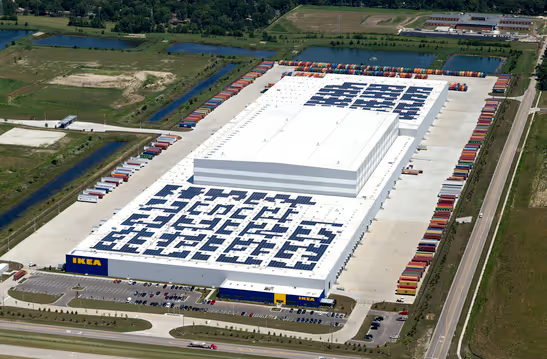
Worst Example: Toys "R" Us
Toys "R" Us, the once-dominant toy retailer, implemented a poorly designed logistics strategy that contributed to the company's eventual bankruptcy. The company relied heavily on manual processes and outdated technology, resulting in inefficient supply chain operations and poor customer service.
The company's distribution centers were understaffed and disorganized, leading to frequent stockouts and delays in delivery. The company also failed to invest in e-commerce technology, which put it at a significant disadvantage compared to competitors such as Amazon.
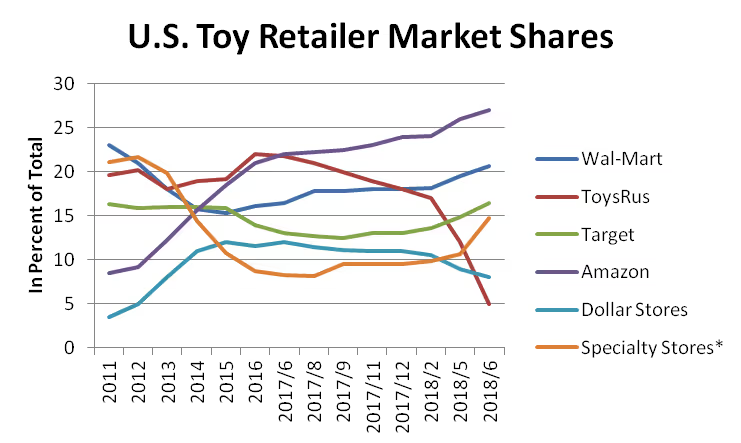
These issues eventually caught up with Toys "R" Us, contributing to its decline and eventual bankruptcy in 2018. The company's logistics strategy serves as a cautionary tale of the importance of investing in modern logistics technologies and optimizing supply chain operations to remain competitive in the retail industry.
Execute A Winning Logistics Strategy With Cascade 🚀
Creating a logistics strategy that will drive success for your business is a challenging endeavor. Knowing how to start and ensuring the strategy will be effective can be overwhelming.
Fortunately, Cascade can help you centralize your logistics strategy, ensuring success every step of the way—from planning to execution and tracking.
You can use our free Logistics Strategy Template to kick off your process or build your own strategic plan in Cascade from scratch. It will help you define your objectives, focus areas, and strategic priorities to ensure your business's growth and profitability.
With Cascade, you can execute your logistics strategy with confidence and achieve positive results for your business. Book a demo with one of our Strategy Execution experts and see Cascade in action!
Other Related Logistics Strategy Templates
- Logistics Management Plan Template
- Supply Chain Strategy Template
- Warehouse Training Program Template
- Sourcing Strategy Template
- Fleet Management Plan Template
- Value Chain Template
- Facility Management Plan Template
FAQs
What are the differences between logistics strategy and logistics operations?
Logistics strategy involves the planning and execution of the overall logistics plan that aligns with the organization's goals and objectives. Logistics operations, on the other hand, refer to the day-to-day activities involved in executing the logistics plan, such as transportation, warehousing, inventory management, and distribution.
What is the difference between logistics and supply chain strategy?
Logistics strategy focuses on the planning and execution of the physical movement and storage of goods from one location to another, while supply chain strategy encompasses a broader perspective that includes the coordination of all activities involved in the creation and delivery of a product or service, from sourcing raw materials to delivering the final product to the customer.
How does the ‘80/20’ relationship apply to logistics strategy?
The '80/20' relationship, also known as the Pareto principle, suggests that 80% of the effects come from 20% of the causes. In the context of logistics strategy, this principle can be applied to identify the most significant logistics activities that have the most impact on the organization's overall performance. By focusing on these critical activities, organizations can optimize their logistics strategy and achieve better results.
What is the logistics cycle?
The logistics cycle refers to the sequence of activities involved in the movement and storage of goods, starting from the point of origin to the point of consumption. The logistics cycle includes several stages, such as procurement, transportation, warehousing, inventory management, and distribution. Effective management of the logistics cycle is crucial to ensure that goods are delivered to customers on time and in the most cost-effective manner.
What are the 7 Rs of logistics?
The 7 Rs of logistics refer to the key principles that guide effective logistics management. They are:
- Right product: ensuring that the product being delivered is the correct one that meets customer requirements.
- Right quantity: ensuring that the correct amount of product is delivered to meet customer demand.
- Right condition: ensuring that the product is delivered in the correct condition, whether it's temperature-controlled or requires special handling.
- Right place: ensuring that the product is delivered to the correct location, which could be a warehouse or a specific customer location.
- Right time: ensuring that the product is delivered at the correct time to meet customer demand and expectations.
- Right customer: ensuring that the product is delivered to the correct customer and that their specific requirements are met.
Right cost: ensuring that the cost of logistics operations is managed effectively to ensure profitability while meeting customer needs.






.png)
.jpg)
.jpg)
%20(1)%20(1)%20(1)%20(1)%20(1).png)



